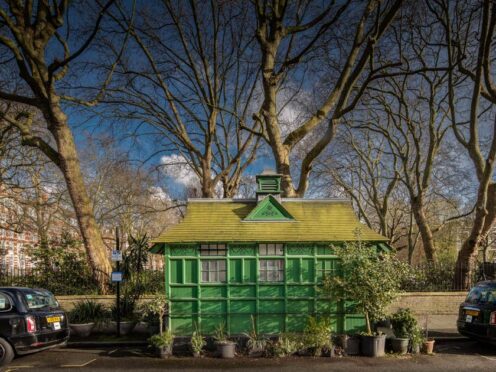Historic green huts which gave Victorian cabbies shelter and a place to eat in London are now all protected buildings, after the final shelter in St John’s Wood was listed.
The cabmen’s shelter on Wellington Place was listed at Grade II and is the last of 13 surviving buildings to be given protected status.
The distinctive green huts offered a place for Victorian cabmen to rest and grab a bite to eat at a time when they were prohibited by law from leaving their horse-drawn carriages unattended.
Built by the Cabmen’s Shelter Fund between 1875 and 1914, fewer than a quarter of the 61 constructed survive today – where they continue to serve modern-day taxi drivers.

They can only be used by those who have passed “The Knowledge”, a demanding examination which has tested hopeful cabbies’ grasp of London’s thousands of streets and landmarks for more than 150 years.
All 13 surviving shelters were restored in the 1980s and 1990s in a campaign by Heritage of London.
Before the Wellington Place shelter, nicknamed The Chapel by locals, was listed on Friday, the most recent to be given protected status were the Pont Street and Chelsea Embankment sites on May 25 2022.
The Grade II listing – which signifies a building of special interest – was made by the Department for Culture, Media and Sports on the advice of Historic England.

At the peak of their popularity, the shelters offered a warm place to rest, eat and drink to thousands of hansom cab drivers in London and were easily identifiable by their familiar size, shape and green colour.
Luke Jacob, listing adviser at Historic England, said: “Full of intrigue, history, tea and bacon sarnies, London’s well-loved cabmen’s shelters are distinctive relics of the horse-drawn age in the capital.
“Originally built from 1875 for the drivers of London’s hansom cabs, they continue to serve both passers-by and cab drivers on the ranks today.
“As we approach the 150th anniversary of the Cabmen’s Shelter Fund it is fitting that the final shelter on Wellington Place – lucky number 13 – has received the official recognition it deserves through listing.”
Listed buildings are those with special architectural or historic importance which are legally protected from demolition, extension or significant modification without a local planning authority’s special permission.
